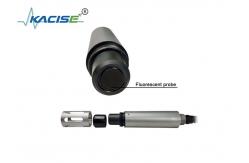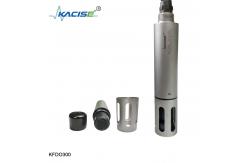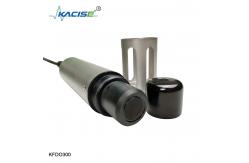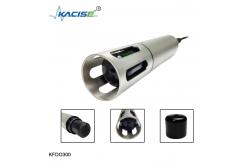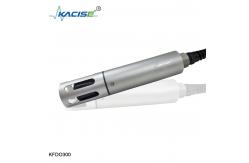Immersion Dissolved Oxygen Sensor Fluorescence quenching
|
KFDO300 Online Fluorescence Dissolved Oxygen Sensor Water Quality Sensor
Integrated design, anti-electromagnetic interference Built-in temperature sensor, real-time temperature compensation Support salinity and air pressure compensation Stainless steel case, IP68 waterproof grade, suitable for various working conditions RS485 signal output, Standard Modbus protocol, easy integration, networking Technical Specifications
General Knowledge of Dissolved Oxygen
Tips:Measuring Dissolved Oxygen by the Colorimetric MethodThere are two variations of dissolved oxygen analysis by the colorimetric method. These are known as the indigo carmine method and the rhodazine D method. Both variations use colorimetric reagents that react and change color when reacted with oxygen in the water. These interactions are based on the oxidation of the reagent, and the extent of the color change is proportional to the dissolved oxygen concentration. Measuring dissolved oxygen by a colorimetric method can be done with a spectrophotometer, colorimeter, or a simple comparator. Using a spectrophotometer or a colorimeter produces more accurate results, while comparison against a comparator such as a color wheel or color block is quick and inexpensive. However, as the human eye is not objective, this can result in some inaccuracy.
Indigo Carmine
According to the indigo carmine method, the deeper the blue, the higher the dissolved oxygen concentration.
The indigo carmine method can be used for measuring dissolved oxygen concentrations between 0.2 and 15 ppm (mg/L). This method produces a blue color, the intensity of which is proportional to the dissolved oxygen concentration. Ferric iron, ferrous iron, nitrite, and sodium hydrosulfite can interfere with this method. In addition, reagents should be kept out of bright light as prolonged exposure can deteriorate the indigo carmine. However, this method is not affected by temperature, salinity, or dissolved gases. Low-range tests are time-dependent and should be analyzed within 30 seconds, while high-range tests require a two-minute processing time.
Rhodazine D
When measuring dissolved oxygen, the rhodazine D method will produce a rich rosy-pink color.
The rhodazine D method is used to determine very low dissolved
oxygen concentrations. Able to measure in the parts per billion
(ppb), rhodazine D reagents react with dissolved oxygen to form a
deep rose-colored solution. This colorimetric method is not
affected by salinity or dissolved gases such as sulfide that can be
present in the water sample. However, oxidizing agents such as
chlorine, ferric iron and cupric copper can interfere and cause
higher DO readings. Other causes of error are polysulfides,
hydroquinone/benzoquinone, and boron and hydrogen peroxide (if both
are present). In addition, sample color and turbidity can affect
the accuracy of the readings. This method is time-dependent, as the
analysis must be made within 30 seconds of mixing the reagent.
Contact InformationPhone +86-17719566736 Email sales@kacise.com Location Tangyan South Road, High-tech Zone, Xi'an City, Shaanxi Province, China
|
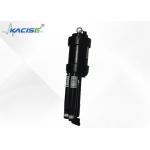
|
KWS-850 On-line Multi-parameter Water Sensor High Accuracy Turbidity Measurement For Wastewater Treatment Plants |
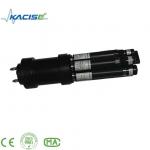
|
Power Consumption 5W 12V KWS-850 Multi-Parameter Water Quality Sensor For Water Monitoring |
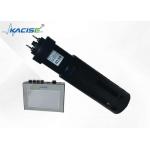
|
Low Maintenance Of The KWS-850 On-line Multi-parameter Water Quality Sensor |
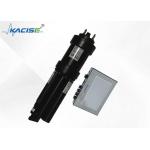
|
Precision KWS-850 On-line Water Turbidity Sensor Water Quality Sensor For Aquaculture |
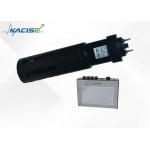
|
The KWS-850 On-line Multi-parameter Water Quality Sensor Can Measure 8 Parameters Simultaneously |
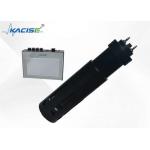
|
The Integrated KWS-850 On-line Multi-parameter Self-cleaning Digital Digital Sensor |

